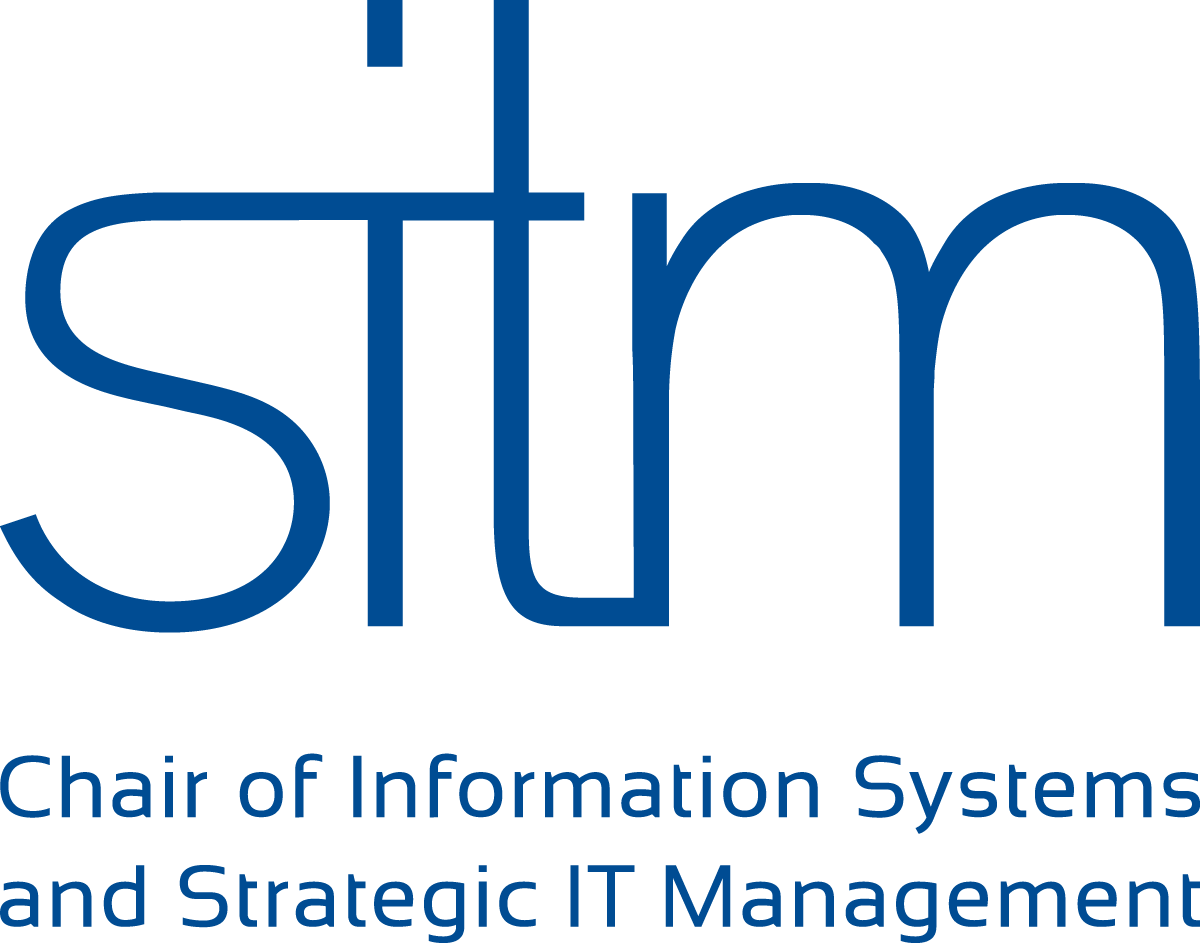Summer Semester 24

Lecture
Strategic Planning of IS (SPIS)
- Lecturer:
 Prof. Dr. Frederik Ahlemann
Prof. Dr. Frederik Ahlemann  Alexandar Schkolski , M.Sc.
Alexandar Schkolski , M.Sc. - Contact:
 Alexandar Schkolski , M.Sc.
Alexandar Schkolski , M.Sc. - Term:
- Summer Semester 2024
- Cycle:
- Sommersemester
- Time:
- Di 10:15-11:45
- Room:
- R09 R04 H02
- Start:
- 9th Apr 2024
- End:
- 16th Jul 2024
- Language:
- English
- Moodle:
- Lecture in Moodle
- LSF:
- Lecture in LSF
Description:
Content
Building upon the more general IS contents at the bachelor level, the goal of the lectures is to prepare the students for typical IT-related management positions in business. The latter include line positions in industries with high IT penetration (e.g. Internet businesses, banking, insurance, and telecoms), management functions within corporate IT departments, or positions as technology-oriented management consultants. Moreover, the module is designed to enable the students to leverage IT/IS in order to optimize business processes and facilitate innovative business models. Consequently, the students are prepared for management challenges at the interface between business and IT, e.g. as process managers or those responsible for IT in business departments. At the beginning of the course, the independent strategic management of IT in corporations will be motivated and its structure provided. During the lectures, a reference framework will indicate the various decision domains that IT strategy needs to incorporate and align. While undergraduate studies focus strongly on the internal structure of IT, the ‘Strategic Planning of IS’ will extend this perspective by investigating the value chain interfaces of IT. These include the sourcing aspect, the delivery of services, as well as the overall IT-business alignment via the IT strategy. To facilitate the students' learning, the course will cover IT strategy, IT governance, project portfolio management, enterprise architecture management, demand management, vendor management, and strategic IT performance measurement, including benchmarking. The course will host at least one guest lecturer from the field of IT management.
Learning Targets:
The students will be able to
- describe and critically reflect on the leverage of IT/IS systems,
- explain management challenges at the interface between business and IT,
- describe different decision domains that IT strategy needs to incorporate and align,
- describe the interfaces between different strategic IT planning topics,
- describe fundamental processes, methods, and tools for the strategic planning of IS, and
- discuss the challenges and limitations of those processes, methods, and tools
Outline:
- Strategy and Success of Firms
- The Business Value of IT
- Business, IT and Digital Strategies
- Digital Products, Services and Business Models
- IT Innovation Management
- Suppliers, Partnerships and Networks
- Enterprise Architecture Management
- Project Portfolio and Program Management
- Risk, Security and Business Continuity Management / IT Governance
- The (Business/IT/Digital) Organization of the Future
Literature:
Peppard, J., & Ward, J. (2016). The Strategic Management of Information Systems: Building a Digital Strategy (4th ed.). Hoboken: John Wiley & Sons.
Riempp, G., Müller, B., and Ahlemann, F. 2008. "Towards a Framework to Structure and Assess Strategic IT/IS Management," in: 16. European Conference on Information Systems (ECIS 2008), W. Golden, T. Acton, K. Conboy, H. van der Heijden and V.K. Tuunainen (eds.). Galway, Ireland: pp. 2484-2495.
Luftman, J./McLean, E. R.: Key Issues for IT Executives. In: MISQ Executive, 3 (2) 2004, 89-104.
Ross, J. W.: Creating a Strategic IT Architecture Competency: Learning in Stages. In: MIS Quarterly Executive, 2, 1, 2003, 31-43.
Sobol, M.; Klein, G. (2009): Relation of CIO background, IT infrastructure, and economic performance, in: Information & Management, 46, 5, 2009, pp. 271-278.
Weill, P./Ross, J.: IT Governance - How Top Performers Manage IT Decision Rights for Superior Results, Boston, 2004.
Luftman, J./McLean, E. R.: Key Issues for IT Executives. In: MISQ Executive, 3 (2) 2004, 89-104.
Leidner, D. E./Beatty, R. C./Mackay, J. M.: How CIOs Manage IT during Economic Decline: Surviving and Thriving Amid Uncertainty. In: MIS Quarterly Executive, 2, 1, 2003, 1-14.
Bharadwaj, A.; Keil, M.; Mähring, M. (2009): Effects of information technology failures on the market value of firms, in: Journal of Strategic Information Systems, 18, 2, 2009, pp. 66-79.
Cartlidge, A., Hanna, A., Rudd, C., Macfarlane, I., Windebank, J., and Rance, S. 2007. "An Introductory Overview of Itil V3," The UK Chapter of the itSMF, London, UK.
Klasen, P., and Safaric, A. 2006. "Studie IT-Organisation Im Wandel: Was Kommt Nach Zentralisierung Und Konsolidierung?," Capgemini Deutschland, Berlin, Germany.
Grover, V., Seung-Ryul, J., Kettinger, W.J., and Lee, C.C. 1993. "The Chief Information Officer: A Study of Managerial Roles," Journal of Management Information Systems (10:2), Fall 1993, pp. 107-130.
Wigand, Rolf T.; Picot, Arnold; Reichwald, Ralf: Information, Organization and Management: Expanding Markets and Corporate Boundaries. Chichester 1998.
Jeffery, M.; Norton, J.: MDCM Inc. (A) - IT Strategy Synchronization, case study, Kellogg School of Management, 2006

